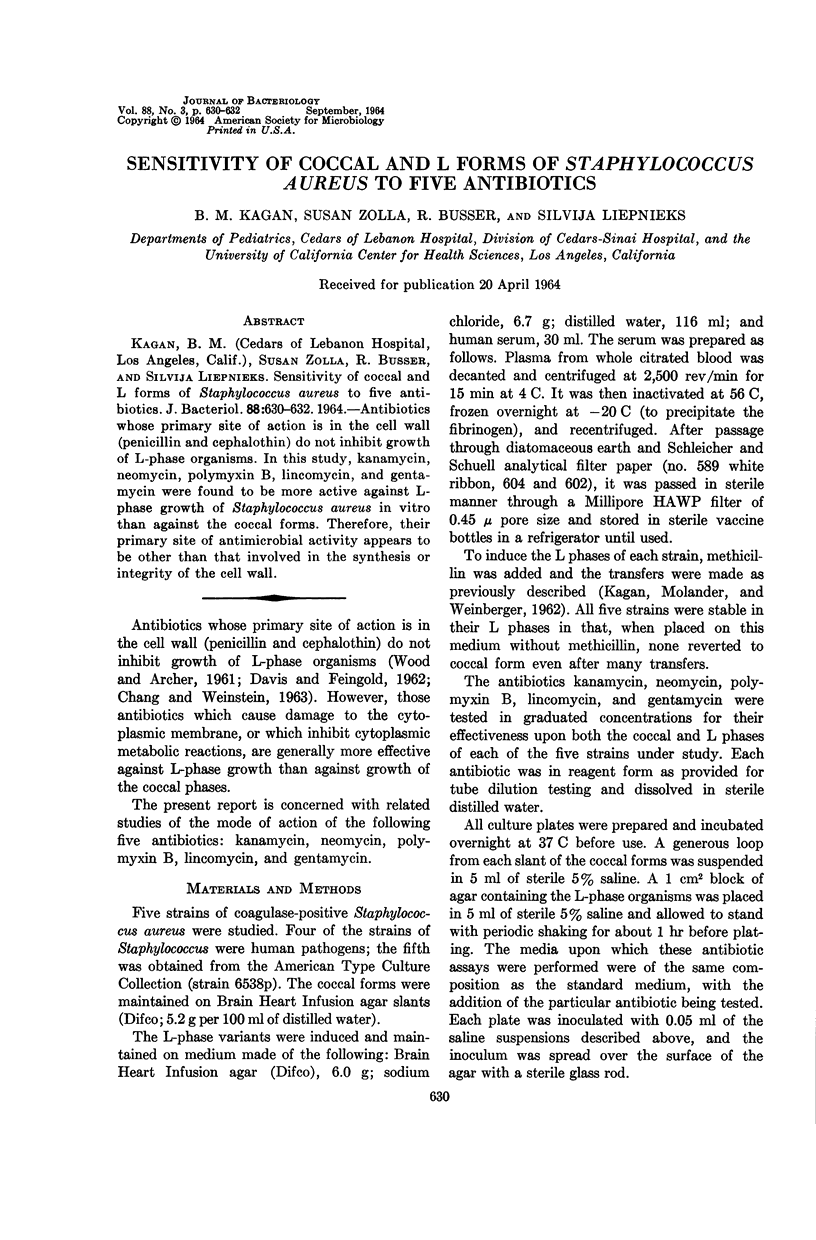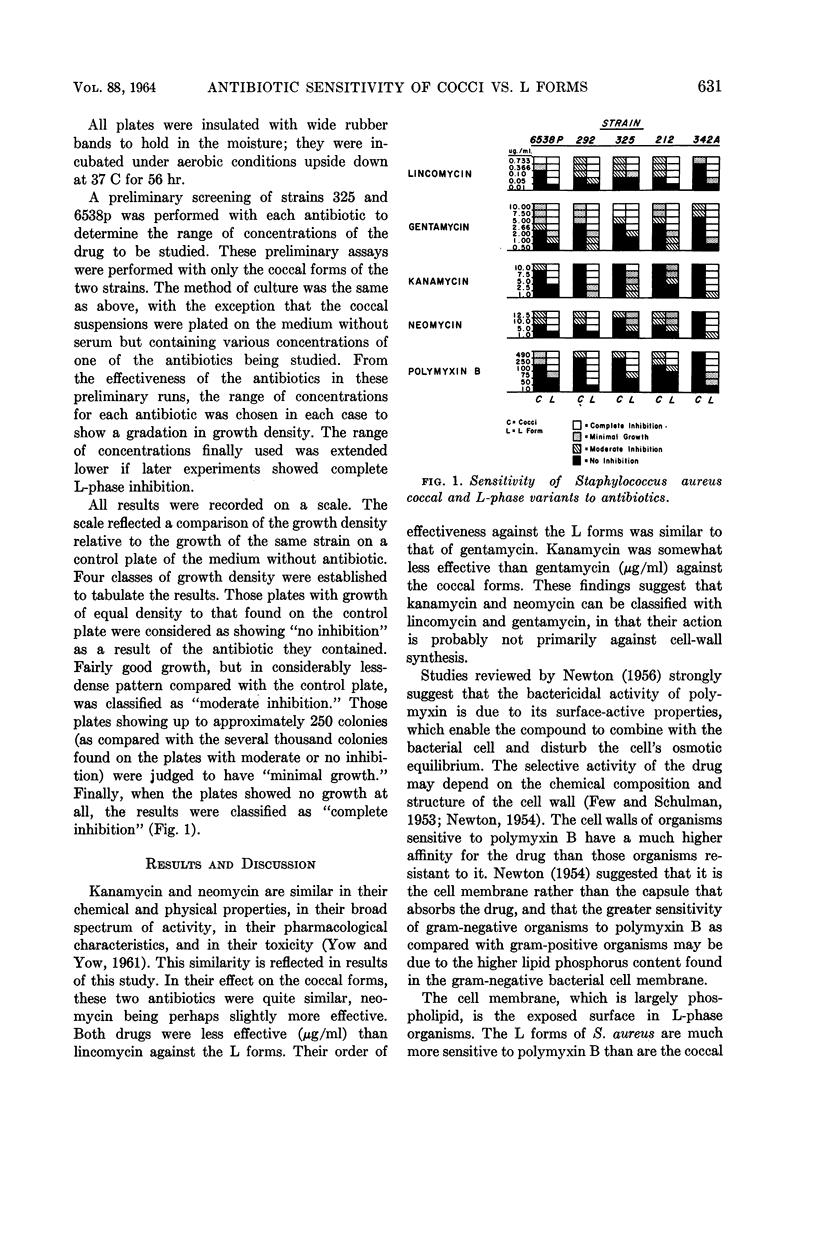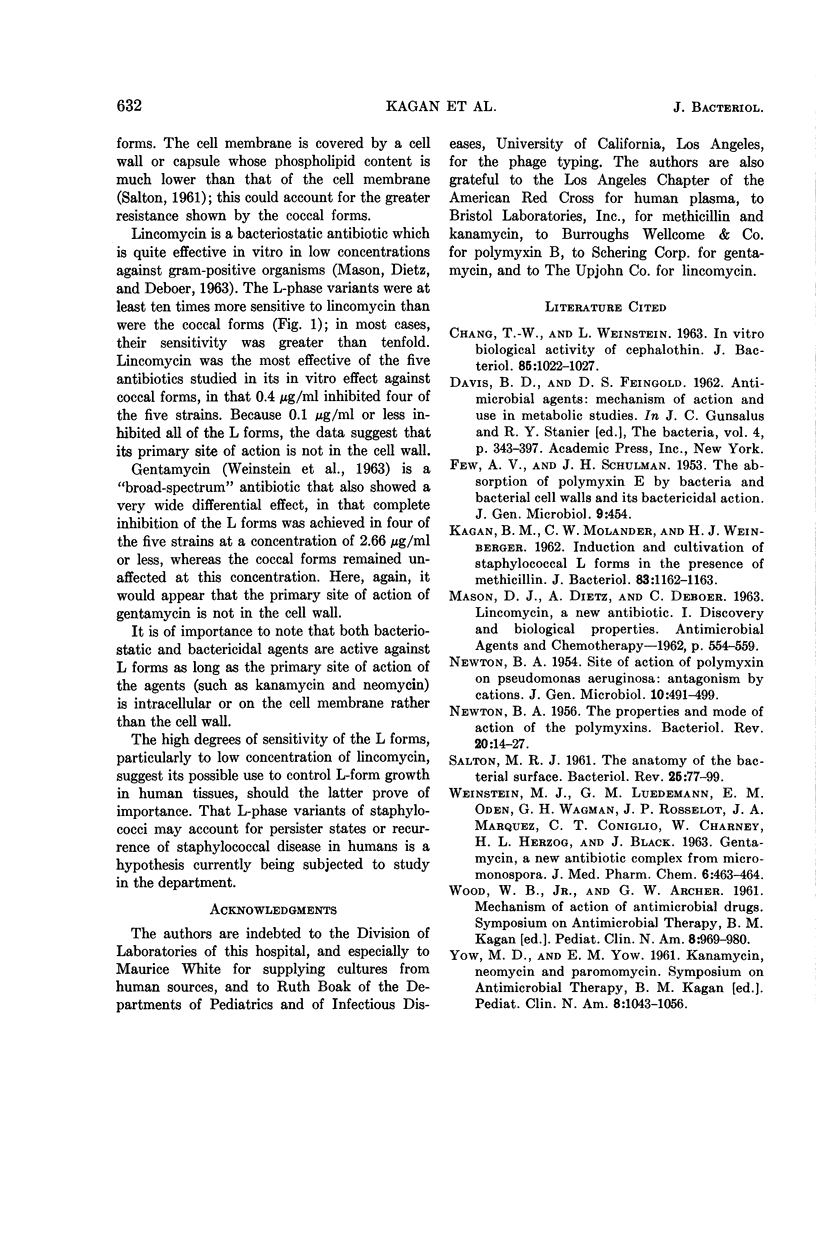Abstract
Kagan, B. M. (Cedars of Lebanon Hospital, Los Angeles, Calif.), Susan Zolla, R. Busser, and Silvija Liepnieks. Sensitivity of coccal and L forms of Staphylococcus aureus to five antibiotics. J. Bacteriol. 88:630–632. 1964.—Antibiotics whose primary site of action is in the cell wall (penicillin and cephalothin) do not inhibit growth of L-phase organisms. In this study, kanamycin, neomycin, polymyxin B, lincomycin, and gentamycin were found to be more active against L-phase growth of Staphylococcus aureus in vitro than against the coccal forms. Therefore, their primary site of antimicrobial activity appears to be other than that involved in the synthesis or integrity of the cell wall.
Full text
PDF


Selected References
These references are in PubMed. This may not be the complete list of references from this article.
- CHANG T. W., WEINSTEIN L. IN VITRO BIOLOGICAL ACTIVITY OF CEPHALOTHIN. J Bacteriol. 1963 May;85:1022–1027. doi: 10.1128/jb.85.5.1022-1027.1963. [DOI] [PMC free article] [PubMed] [Google Scholar]
- FEW A. V., SCHULMAN J. H. The absorption of polymyxin E by bacteria and bacterial cell walls and its bactericidal action. J Gen Microbiol. 1953 Dec;9(3):454–466. doi: 10.1099/00221287-9-3-454. [DOI] [PubMed] [Google Scholar]
- KAGAN B. M., MOLANDER C. W., WEINBERGER H. J. Induction and cultivation of staphylococcal L forms in the presence of methicillin. J Bacteriol. 1962 May;83:1162–1163. doi: 10.1128/jb.83.5.1162-1163.1962. [DOI] [PMC free article] [PubMed] [Google Scholar]
- NEWTON B. A. Site of action of polymyxin on Pseudomonas aeruginosa: antagonism by cations. J Gen Microbiol. 1954 Jun;10(3):491–499. doi: 10.1099/00221287-10-3-491. [DOI] [PubMed] [Google Scholar]
- NEWTON B. A. The properties and mode of action of the polymyxins. Bacteriol Rev. 1956 Mar;20(1):14–27. doi: 10.1128/br.20.1.14-27.1956. [DOI] [PMC free article] [PubMed] [Google Scholar]
- SALTON M. R. The anatomy of the bacterial surface. Bacteriol Rev. 1961 Jun;25:77–99. doi: 10.1128/br.25.2.77-99.1961. [DOI] [PMC free article] [PubMed] [Google Scholar]
- WEINSTEIN M. J., LUEDEMANN G. M., ODEN E. M., WAGMAN G. H., ROSSELET J. P., MARQUEZ J. A., CONIGLIO C. T., CHARNEY W., HERZOG H. L., BLACK J. GENTAMICIN, A NEW ANTIBIOTIC COMPLEX FROM MICROMONOSPORA. J Med Chem. 1963 Jul;6:463–464. doi: 10.1021/jm00340a034. [DOI] [PubMed] [Google Scholar]
- WOOD W. B., Jr, ARCHER G. W. Mechanism of action of antimicrobial drugs. Pediatr Clin North Am. 1961 Nov;8:969–980. doi: 10.1016/s0031-3955(16)31187-7. [DOI] [PubMed] [Google Scholar]
- YOW M. D., YOW E. M. Kanamycin, neomycin and paromomycin. Pediatr Clin North Am. 1961 Nov;8:1043–1056. doi: 10.1016/s0031-3955(16)31192-0. [DOI] [PubMed] [Google Scholar]


